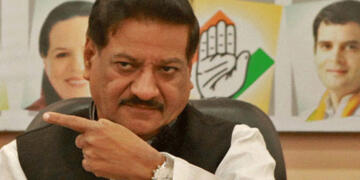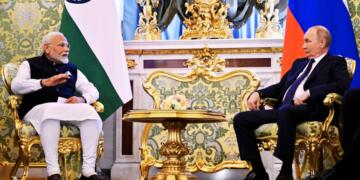The Trump administration’s declaration of retaliatory tariffs has caused alarm around the world, impacting even remote areas. He justified the tariffs as a response to years of economic exploitation by foreign nations adding that they were not “Full reciprocal” but “kind reciprocal” tariffs.
A New Tariff Formula Based on Trade Deficits
The newly installed reciprocal tariff program begins with baseline tariffs set at 10% that can increase up to 50%. Contrary to previous framework, where tariff rates and trade barriers were tied, the Trump administration adopted a formula more based on trade deficits. The adjustment reflects a strategic effort to reduce the U.S. trade deficit rather than merely being concerned about some other nations’ trade policies.
How the Tariffs Were Determined
The United States Trade Representative (USTR) explained the method in a statement issued Wednesday evening. In a Bloomberg analysis, the computation is done by taking a nation’s trade surplus with the U.S. and dividing it by its exports, based on 2024 data of the U.S. Census Bureau. The resulting percentage is then cut in half to get the final tariff rate.
For instance, China’s trade surplus over the U.S. in 2024 was $295 billion, and total exports to the U.S. were $438 billion. This gave a proportion of 68%, and when this was divided by two, it yielded a tariff rate of 34%. This percentage was then imposed on Chinese imports.
This approach was also extended to other trade partners such as Japan, South Korea, and the European Union. However, in case the US have trade surplus or balanced trade, the Trump administration has charged a flat 10% tariff rate. The USTR emphasized that this approach better serves Trump’s objective of narrowing the U.S. trade deficit, as opposed to evaluating individual trade barriers, which would be too complex.
Confusion Surrounding Tariff Announcements
Despite the structured formula, inconsistencies emerged in the final tariff rates announced by Trump. The figures displayed at the White House on Wednesday differed slightly from those in the annex of the executive order. For example, South Korea’s tariff was listed as 25% on Trump’s presentation table but 26% in official documents of the White House. A similar discrepancy occurred with India, where the placard listed 26% while the White House records showed 27%.
Trump had previously suggested that the tariff rates would account for direct tariffs, taxes, currency manipulation, and non-tariff barriers. He showcased these figures under the heading “Tariffs Charged to the USA, Including Currency Manipulation and Trade Barriers.”
A Departure from Previous Trade Analysis
The formula represents a significant change from earlier White House statements, which suggested a more extensive analysis of trade barriers. Initially, the administration indicated that tariffs would be based on various factors, including structural limitations on market access. However, the final model focused solely on trade deficits.
Also Read: Trump announces 26 per cent reciprocal tariffs on India, heralds global trade war
A memorandum issued on February 13 directed the USTR to examine non-reciprocal trade relationships and restrictive foreign policies. Notably, trade balances were not included in this analysis. However, the final tariff formula ultimately centered on the U.S. trade deficit with individual countries.
Economic Impact and Concerns
In addition to trade deficit calculations, the tariff model included two key economic factors: the price elasticity of import demand and the elasticity of import prices concerning tariffs. Yet, the administration placed these values in a manner that effectively nullified their effect, making sure they did not impact the final tariff levels.
Through the introduction of such changes, the Trump administration wanted to realign global trade balances and help solve long-standing trade deficits. But there are still questions about the economic implications of the policy for U.S. businesses as well as its foreign trading partners.































